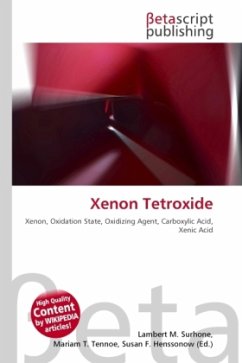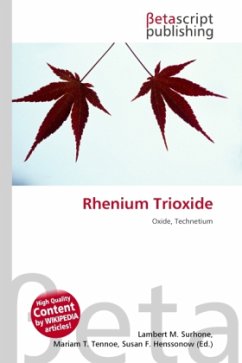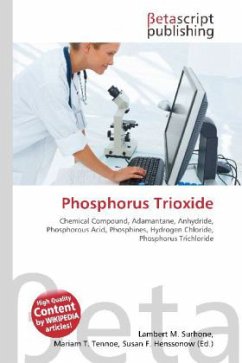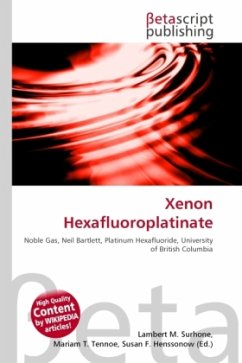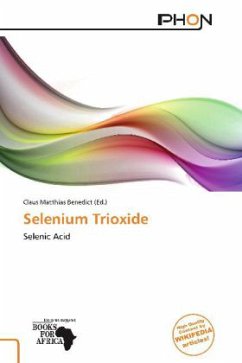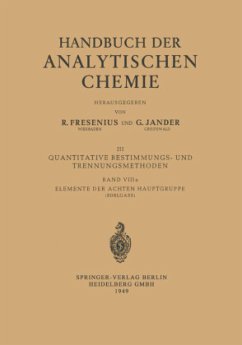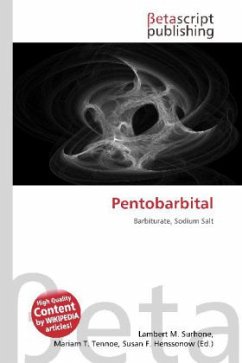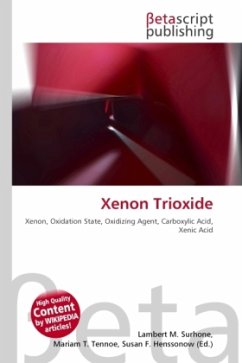
Xenon Trioxide
Versandkostenfrei!
Versandfertig in 6-10 Tagen
19,99 €
inkl. MwSt.

PAYBACK Punkte
10 °P sammeln!
High Quality Content by WIKIPEDIA articles! Xenon trioxide is a strong oxidising agent and can oxidise most substances that are susceptible. However, it is slow-acting and this reduces its usefulness. When it dissolves in water, an acidic solution of xenic acid is formed: XeO3 (aq) + H2O H2XeO4 is in equilibrium with H+ + HXeO4 This solution is stable at room temperature and lacks the explosive properties of xenon trioxide. It oxidises carboxylic acids quantitatively to carbon dioxide and water.Alternatively, it dissolves in alkaline solutions to form xenates. The HXeO 4 anion is the predomina...
High Quality Content by WIKIPEDIA articles! Xenon trioxide is a strong oxidising agent and can oxidise most substances that are susceptible. However, it is slow-acting and this reduces its usefulness. When it dissolves in water, an acidic solution of xenic acid is formed: XeO3 (aq) + H2O H2XeO4 is in equilibrium with H+ + HXeO4 This solution is stable at room temperature and lacks the explosive properties of xenon trioxide. It oxidises carboxylic acids quantitatively to carbon dioxide and water.Alternatively, it dissolves in alkaline solutions to form xenates. The HXeO 4 anion is the predominant species in xenate solutions.These are not stable and begin to disproportionate into perxenates (+8 oxidation state) and xenon and oxygen gas.Solid xenates containing XeO4 6 or XeO2 4 have not been isolated; however, XeO3 reacts with fluorides such as KF, RbF, or CsF to form stable compounds of the form MxeO3F




